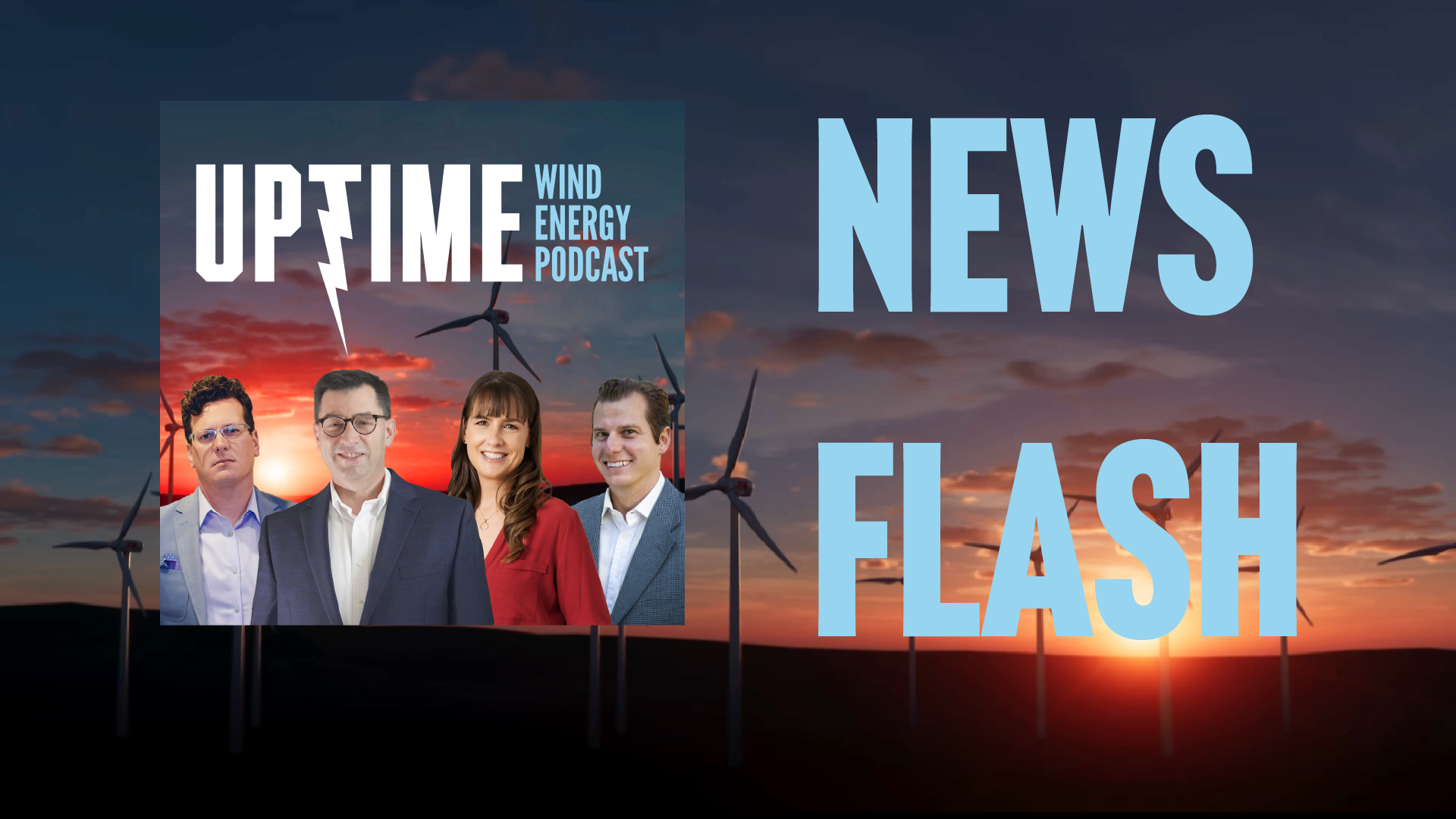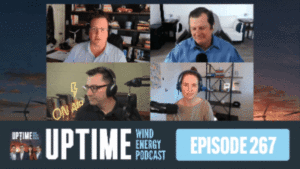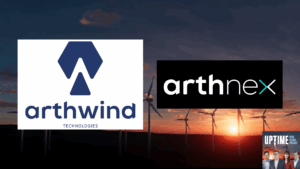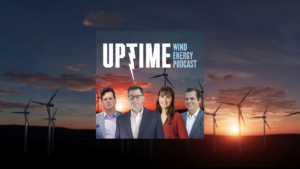Podcast: Play in new window | Download
Allen Hall, Philip Totaro, and Joel Saxum discuss the sale of Siemens Gamesa’s India Wind Turbine unit, Iberdrola’s acquisition of remaining Avangrid shares, and Auren Energy’s merger with AES Brazil Energy.
Sign up now for Uptime Tech News, our weekly email update on all things wind technology. This episode is sponsored by Weather Guard Lightning Tech. Learn more about Weather Guard’s StrikeTape Wind Turbine LPS retrofit. Follow the show on Facebook, YouTube, Twitter, Linkedin and visit Weather Guard on the web. And subscribe to Rosemary Barnes’ YouTube channel here. Have a question we can answer on the show? Email us!
Pardalote Consulting – https://www.pardaloteconsulting.com
Weather Guard Lightning Tech – www.weatherguardwind.com
Intelstor – https://www.intelstor.com
Allen Hall: I’m Allen Hall, president of Weather Guard Lightning Tech, and I’m here with the founder and CEO of IntelStor, Phil Totaro, and the chief commercial officer of Weather Guard, Joel Saxum. And this is your News Flash. News Flash is brought to you by our friends at IntelStor. If you want market intelligence that generates revenue, and who doesn’t?
Then book a demonstration of Intastore at intelstor.com. Siemens Energy has put the India Wind Turbine unit of its subsidiary, Siemens Gamesa Renewable Energy, up for sale. The India business has an annual revenue of 700 million and is being valued at 1. 5 billion. 1 billion for the transaction. Siemens has appointed Investment Bank Barclays to find buyers with Adani Renewable Energy, TPG Rise, Brookfield Energy, Transition Funds, Macquarie, and Masdar being sounded out.
Siemens Gamesa has reported poor results over the last few years and has been working on a turnaround, of course, aiming to break even in 2021. 2026. Phil, how does this fit into the overall strategies for Siemens Gamesa with this India sale?
Philip Totaro: It’s interesting because they have said that they’re still interested in doing something in the Indian market and it sounds like they want to continue servicing some of the projects in India, but the fact that they would put You know, whatever other assets they have up for sale, potentially inclusive of their their order book, so to speak with sales and services is quite fascinating for companies like, INOX and Adani Group, who it sounds like is the the leader of this charge to potentially acquire.
These assets, it would actually be a pretty good fit for Adani because they don’t necessarily need the Siemens turban technology but they would want the manufacturing facilities and certainly some of the services order book that, that they could acquire through this.
Joel Saxum: And would it be smart for a competing OEM to try to scoop this up just to get a peek at some of the.
IP. Now I’m not saying the IP is going with it because of course you’re not going to sell that. But if you’re going to get the services portfolio, you’ve got to get every in depth piece of schematic and all these other things with it. So my question would be then what’s all going to go with this sale, right?
You’re going to have, you may have the services order book crate contracts for service. There’s a, because we all know there’s a lot of G 97 G one fourteens. There’s a ton of two megawatt ish machines that are Siemens Mesa in, right? India. So you get that, you may get some manufacturing facilities and other things, but it’s really a confusing sale to me, but just because I don’t understand.
What the value of Siemens Gamesit to me is the turbine IP, but you’re not getting any of that. You’re just getting this like commercial and services side. Am I correct or am I seeing something incorrect here?
Philip Totaro: No you’re correct. The value would be different to different companies. So let’s, if we go through the list of, the companies Allen just rattled off, you look at Brookfield the reason that they would be interested in this is purely for the services side of the business, where, considering the fact that all four of those companies already are substantial asset owners, this gives them the option and opportunity to build up their kind of services credentials and, take on a turnkey services business without having to build it up organically.
So that’s appealing, but is it really the best fit? The reason why it looks like Adani might be the better fit is not only is Adani the, number one independent power producer in India, and even has It’s project sites with Siemens Turbans, so they’d be taking over, the service on their own sites with the services contracts.
The fact that Adani would also be able to make use of the manufacturing facilities for the wind turbines that they’ve got now the fact that they could, leverage the supply chain it, it gives them, a leg up as far as, this type of an acquisition is concerned.
However, going back to your other question, Joel, wouldn’t it be good for a competing OEM to step in? Yes, theoretically, if that meant that they could take over a factory and retool it for their turbines, it would cost effectively enough where they would also have scale. The only company that would probably be capable or interested in doing that would be either Envision Energy or Sany from China.
I doubt that Vestas would actually do it because Vestas already has some facilities over there, so does GE including, LM has some blade factories in India. So you’re, nobody’s going to spend the money to acquire a thing just to take a look at the IP and then not fully leverage the manufacturing facility.
I think the reason why this fits so well for a company like Adani is they would not only get the opportunity to leverage all of that, but they would also be able to make use of all of the IP. They would also be able to make use of. The manufacturing footprint to grow their own business in India and Sri Lanka.
Allen Hall: You would really work, acquire the remaining 18. 4 percent of Alvin grid shares. It doesn’t own for 35 and 75 cents per share in cash. Their price represents an 11 percent premium over the closing price. On March 6th of this year, Avans Grid’s Board of Directors unanimously approved the agreement. The transaction is expected to close in Q4 of this year, subject to the customary closing conditions and shareholder approval.
Phil, this is a big move for Iberdrola, bringing everything in house into the U. S., so now they’re just one large company again. Phil, does this have a benefit to them in the short term, or is this more of a long term play?
Philip Totaro: I’d say both, because what they’re doing here is, in addition to the commercial idea of Putting the company back together.
The reason why they would do this is it’s going to make it easier for them to potentially redeploy capital. Their onshore wind fleet in the United States has an average age above 15 years. And they’re getting close to the point where unlike a lot of other companies that have repowered their fleet after 10 years they haven’t done that at Iberdrola because they have such lucrative power purchase contracts that they’re just going to continue running those projects out till the point where those PPAs expire after 20, presumably 20 years, then they’re going to repower.
They know that they’re not going to get those same level of PPAs when they have to renegotiate them with either the utility that they’re already dealing with. Or if they have to, slide back into the merchant market, they’re not gonna get anything that lucrative. So this is, I think this is about structuring and positioning themselves for this repowering.
Allen Hall: Auren Energy S. A. has agreed to merge with AES Brazil Energy S. A., creating a platform with 8. 8 gigawatts of renewable energy output. The AES Corporation will sell its 47. 3 percent equities interest in AES Brazil to Auren for about 640 million dollars. Auren intends to absorb AES Brazil and make it a wholly owned subsidiary.
Now, with all the transactions that are happening in Brazil, it seems like there’s companies going in and companies going out. What is the move by Auren trying to accomplish here?
Philip Totaro: I think this has to do with diversification. So if you’re familiar with Auren’s portfolio, they are quite strong in solar and wind.
But we’ve talked about before on the show, the fact that in Brazil, you’ve got some challenges with the distribution companies in Brazil wanting to, add wind at the pace in which the industry is ready to develop it. They’re still going to be active throughout the region, but given the current state of, renewables development in Brazil, I think it’s just The time that AES has decided to pull out and, Auren is given an opportunity to diversify their portfolio which also contains other, kind of conventional power generation and now a rather substantial portfolio of renewables.











